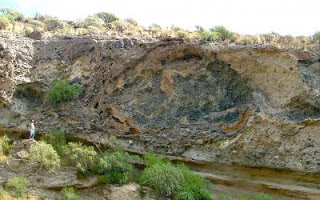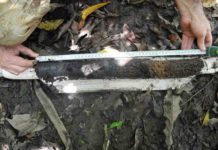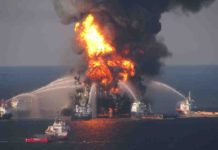
Volcanologists from the University of Leicester have uncovered one of the world’s best-preserved accessible examples of a monstrous landslide that followed a huge volcanic eruption on the Canarian island of Tenerife.
Seven hundred and thirty-three thousand years ago, the southeast slopes of Tenerife collapsed into the sea, during the volcanic eruption. The onshore remains of this landslide have just been discovered amid the canyons and ravines of Tenerife’s desert landscape by volcanologists Pablo Dávila-Harris and Mike Branney of the University of Leicester’s Department of Geology.
The findings have been published in this October’s edition of the international journal Geology. The research was funded by CONACYT, Mexico.
Dr Branney said: “It is one of the world’s best-preserved accessible examples of such an awesome phenomenon, because the debris from such landslides mostly spreads far across the deep ocean floor, inaccessible for close study.
“The beautifully-displayed Tenerife rubble includes blocks of rapidly chilled lava, added as the volcano erupted. Radioactive minerals within them enabled the researchers’ colleague, Michael Storey at Roskilde University, Denmark, to provide such a precise date for this natural catastrophe.
“Climate change is often invoked as a trigger for ocean-island landslides, but in this case it seems that a growing dome of hot lava triggered the landslide by pushing the side of the volcano outwards.
“In the shattered landscape that remained, lakes formed as rivers were dammed by debris, and the change to the shape of the island altered the course of explosive volcanic eruptions for hundreds of thousands of years afterwards.”
The researchers state that such phenomena are common but infrequent, and understanding them is vital, for their effects go far beyond a single ocean island. Tsunamis generated from such events may travel to devastate coastlines thousands of miles away.
“Understanding the Earth’s more violent events will help us be prepared, should repeat performances threaten,” they state.
Note : The above story is reprinted from materials provided by University of Leicester, via EurekAlert!, a service of AAAS.










